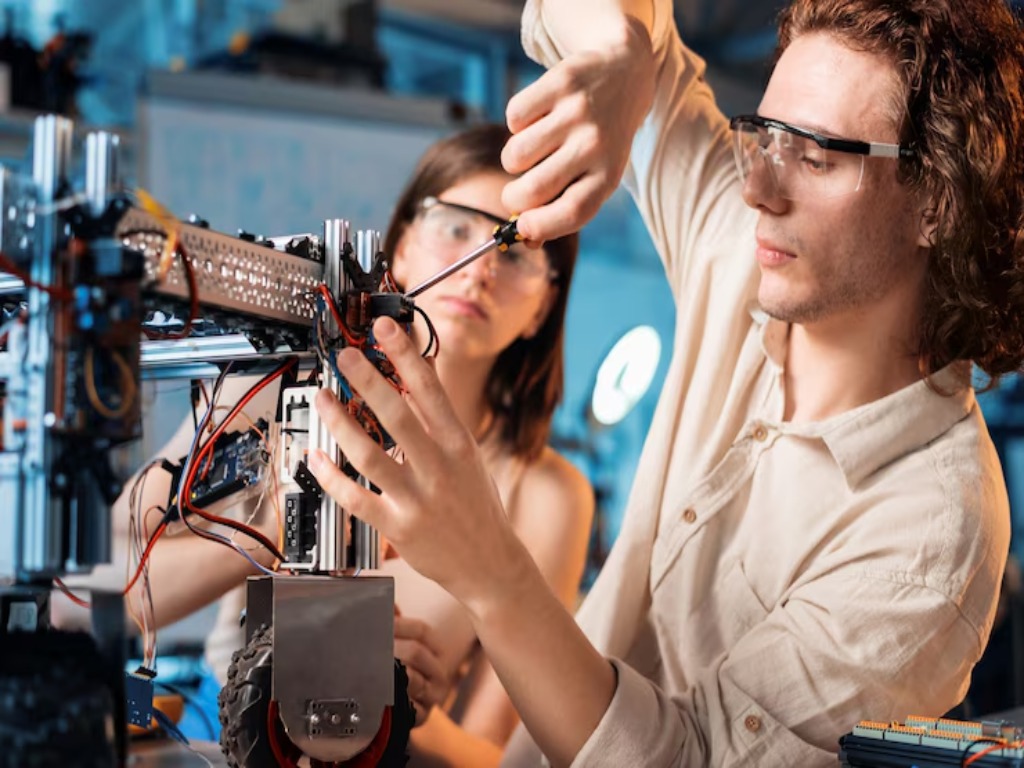 Important Documents For Admission (2025 - 2026)
Important Documents For Admission (2025 - 2026)

In today’s rapidly evolving technological landscape, engineering education must go beyond traditional teaching and textbook learning. The future belongs to institutions that prioritize research and innovation, nurturing not just job-ready graduates but future-ready thinkers and changemakers. At Indore Institute of Science and Technology, the Best Engineering College in Indore is where there is a growing emphasis on developing ecosystems that foster curiosity, problem-solving, and original thought.
This article explores why research and innovation are critical pillars of quality engineering education and how the top colleges are successfully integrating them into the student experience.
Indore Institute of Science & Technology (IIST), established in 2003 and ranked among the top 5 engineering institutions in Indore, fosters a strong research-driven culture. Approved by AICTE and affiliated with RGPV Bhopal, IIST empowers students to become innovators, not just graduates. The institute houses advanced research labs, centres of excellence in AI, IoT, and renewable energy, and encourages participation in national-level R&D competitions. Extracurricular activities such as robotics clubs, hackathons, and paper presentation contests enhance practical knowledge. Events like TechXplore, Project Expo, and Innovation Week are signature platforms for budding engineers to showcase their work. With constant faculty mentoring and industry collaborations, IIST helps students turn ideas into patents, prototypes, and viable startups. Here, innovation isn’t an extracurricular—it’s embedded in the academic DNA. IIST is the ideal destination for students passionate about research, innovation, and pushing the boundaries of what engineering can achieve.
Engineering is the application of science to solve real-world problems. Theoretical knowledge forms the base, but research is the bridge that translates knowledge into impact. Innovation, on the other hand, is the ability to think creatively and apply research outcomes to design better solutions, products, and processes.
When institutions integrate research and innovation into their core vision:
This shift transforms the campus into a center of discovery rather than just dissemination.
The engineering institutions distinguish themselves not just through academic results but through vibrant research culture, innovation labs, and collaboration with industry and government bodies. Key features include:
These institutions equip students not just for jobs but for roles as inventors, entrepreneurs, and researchers.
Research instills critical thinking and analytical abilities in students. It trains them to:
This mindset helps engineers stand out in competitive exams, interviews, and academic applications for M.Tech, MS, or PhD programs.
Moreover, students who participate in funded research projects are more likely to secure scholarships, fellowships, and prestigious internships at premier global organizations.
Innovation turns engineers into solution creators. While research focuses on understanding phenomena, innovation focuses on applying that understanding.
The top institutions embed innovation into the curriculum and campus life through:
These activities build a practical mindset and prepare students for careers in startups, product companies, and R&D roles.
Leading engineering colleges in Central India have invested significantly in setting up advanced labs that reflect industry standards. These include:
Such environments encourage students to move beyond rote learning and gain hands-on experience with tools used in the industry.
One of the key trends in top-tier institutions is encouraging undergraduate students to participate in real research. Some initiatives include:
These platforms empower students to tackle complex problems in climate change, sustainability, healthcare, smart cities, and more.
Research and innovation flourish when there is collaboration beyond the classroom. Some of the engineering institutions have forged strong partnerships with:
Such linkages lead to real-time exposure, internships, live projects, and an innovation-driven ecosystem.
The strength of any research-based institution lies in its faculty. Colleges that attract and retain research-oriented educators set the tone for innovation.
Faculty at these institutions:
When students are mentored by such faculty, they inherit a culture of inquiry and ambition.
Innovation doesn’t stop at prototypes—it must reach the market. Premier colleges are building strong incubation ecosystems to support student entrepreneurs. These include:
Several successful startups in agritech, edtech, medtech, and software have emerged from the engineering campuses of Indore and surrounding regions.
Innovation thrives on recognition. Institutions that celebrate student and faculty achievements build a culture of excellence. Top colleges regularly win:
Such accolades elevate the institution’s reputation and attract even better talent each year.
A research-oriented curriculum goes beyond lectures and includes:
These practices ensure students don’t just consume information—they create knowledge.
With AI, automation, and sustainability disrupting every sector, engineering graduates need to be more than coders or designers. They need to be thinkers who:
A research-driven education nurtures these skills, giving students a competitive edge in both employment and entrepreneurship.
Institutions with a strong research legacy tend to produce alumni who excel in academia, industry, and governance. These alumni:
This cycle of success ensures that the research and innovation culture continues to grow stronger every year.
Ultimately, the most important impact of research and innovation is cultural. The best institutions inspire a mindset where students:
This is the hallmark of institutions that are not just teaching engineers but building visionaries.
In conclusion, the engineering colleges that lead in today’s academic environment are not those with the tallest buildings or the biggest lecture halls—but those that place research and innovation at their core. At Indore Institute of Science and Technology, the Top Engineering Colleges in Indore where from AI labs to student-led startups, from global publications to smart city collaborations, every activity reflects a deep commitment to original thought and impact.
One stands out for its unwavering focus on pushing boundaries, nurturing intellectual curiosity, and equipping students with the tools to shape the future. For students aspiring to build careers that matter—not just jobs—this research-centric environment offers the perfect launchpad.